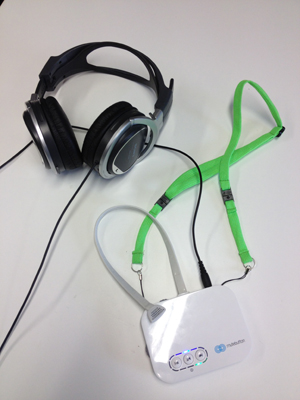Dr Ross O'Neill, CEO, MuteButton
Bringing a medical technology to market can be a long haul. Regulatory demands mean it is not unusual for an innovation to take three to five years or longer to start bringing in revenue. So what are some of the trends and challenges for start-ups in this space in Ireland?
Each year most of the new life-science companies supported by Enterprise Ireland are in med tech, according to John O’Dea, an Enterprise Ireland manager for high-potential start-up (HPSU) companies.
The start-ups designated as HPSUs receive substantial investment of up to €350,000, while others benefit from the Competitive Start Fund, whereby Enterprise Ireland puts up to €50,000 into the company for a percentage equity, he explains.
To give an idea of numbers, last year O’Dea saw around 16 or 17 HPSUs in the life sciences, while another five or six received funding from the Competitive Start Fund and the figures are similar this year. Many more life-science promoters get support through Enterprise Ireland to test the feasibility of their innovation or to work with business mentors and “help them kick the tyres”, he adds.
The technologies involved cover a broad span, including cardiovascular, endovascular, orthopaedics, access and closure devices and patient monitoring – and the numbers are holding well.
“It has been on a rising trend over the last four to five years,” says O’Dea. “The big change that we have seen is more overseas med-tech projects – we launched a €10m fund for overseas HPSU start-ups and we will do about five life-science projects this year in that space from overseas. That’s a very significant change – traditionally we would have done maybe one or two a year – so we are certainly seeing more. There is an interest in Ireland as a location for starting up.”
Funding: in for the long haul
One of the big challenges for med-tech start-ups is getting funded, notes O’Dea. Bringing a medical technology to market can take years, and that means a long time before the investors start to see revenue.
“The money is going out for so long, it’s a really challenging space,” he says. “And VCs are getting more risk averse I think; they haven’t made an awful lot of money in their investments in the last decade, so they are more cautious about when they are willing to invest. In the main, [Enterprise Ireland] concentrates the firepower at the very early stage where it’s really high risk.”
Home market needs boosting
The funding difficulty for start-ups is echoed by Siobhan King-Hughes, founder of SensorMind, a networked, sensor-based system for the home that helps elderly people or those with a disability to live independently.
“Initial funding is a challenge, especially for start-ups who cannot avail of the bigger funding structures like R&D funding, which are available to larger organisations,” says King-Hughes, who is based in the Invent Centre at Dublin City University. “R&D tax credit can help, but you need to raise your own R&D capital which is tough in this environment.”
After that it can still be an uphill climb to market a healthcare product in Ireland, she notes. “Much of the spend in the space is controlled by the Government, that’s to say the HSE. At SensorMind, like many before us, we have found that it is easier to sell overseas than to sell here. This should not be the case – the whole economy would be boosted if our own Government showed faith in our developments by buying our solutions, if only to provide us with a valuable reference customer. Much better than equity investment or grant aid would be a genuine business engagement from the largest purchaser in the State.”
MuteButton technology
To spin out or not to spin out
A challenge facing university-based innovators is if and when to spin out a company, notes Dr Ross O’Neill. He’s CEO of MuteButton, which is developing innovative technology to target tinnitus, or perceived noise. The device plays music to stimulate the sense of hearing and at the same time ‘plays’ the music to sensors placed on the tongue to stimulate the sense of touch.
This approach, which was developed through research at NUI Maynooth, is designed to help the brain to separate the ‘real’ noise from the perceived sounds of tinnitus.
In 2010, O’Neill won Enterprise Ireland’s ‘One to Watch’ award, and he acknowledges that the assistance from Enterprise Ireland has enabled the success of the company to date.
MuteButton has now gathered data on 80 patients undergoing treatment with its device. “The results we are getting are very positive,” says O’Neill. “And we are going to proceed now and take the device to market.”
As a general insight, O’Neill has spotted some potential pitfalls. If a technology is spun out of the university setting too early, the problem is that when a company spins out the regulatory hurdles to bring the innovation to market ramp up, he explains.
“Once you spin out, you have declared commercial intent under the terms of the EU Medical Device Directive,” says O’Neill. “The optimum point to spin out is when you have a portfolio of strong clinical data to minimise the amount of clinical work you have to do on the commercial side of the ‘commercial intent’ divide. There probably needs to be greater awareness of this.”
Siliconrepublic.com is hosting Med Tech Focus, an initiative which over coming months will cover news, reports, interviews and videos, documenting Ireland’s leading role in one of the hottest sectors in technology.
